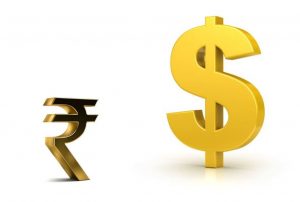
Conjuring up speculations over the government turning a blind eye to the free fall of the rupee, the government think tank Niti Ayog opined in not so many words that the RBI was unlikely to intervene as was in the case of 2013. But time round it must be mentioned the rupee slide comes in the wake of the Trump trade war as well as rising crude oil prices.
Rajiv Kumar, Vice Chairman, Niti Ayog today said; “The Indian rupee is today overvalued by almost 5 per cent in terms of Real Effective Exchange Rate (REER).. and as such there in no need for panic”. REER is a weighted average of currencies of 36 trading countries adjusted against inflation and weighted against volume of bilateral trade. Moreover he said that since the rupee was on free float and hence there was little to be done by the RBI.
In 2015, China resorted to deliberate devaluation of the Chinese currency Yuan-Renminbi twice in order to push it exports. China that time had panicked with its stock market index Hang Seng showing a drastic dip indicating that everything was not well with its economy.
But despite the Niti Ayog assurances, the rising crude oil prices as well as Trumps tariff imposition on imports and its trade wars put the Indian currency in a disadvantage position.
Assuaging any panic to the rupee free fall which touched 69 to a US dollar, which last happened in 2013 when the UPA II was in power, the government think tank said that the macro economic conditions then were quite different. That time the rupee had become highly volatile. Kumar, today defended the fall in rupee versus the US dollar and said that the macro economic conditions in 2013 when the rupee had touched an all time low of 69 to a dollar were quite different and as such there was no need to panic on rupee free fall. He said then the rupee had drastic free fall to a record 69 to a dollar in just three months and the REER had slipped. This was when the UPA II brought in a new RBI Governor Rajan Raghunathan to stabilise the fast weakening Indian currency.













